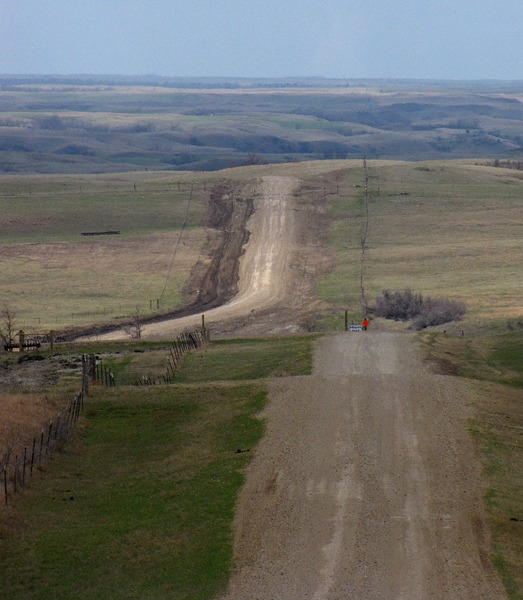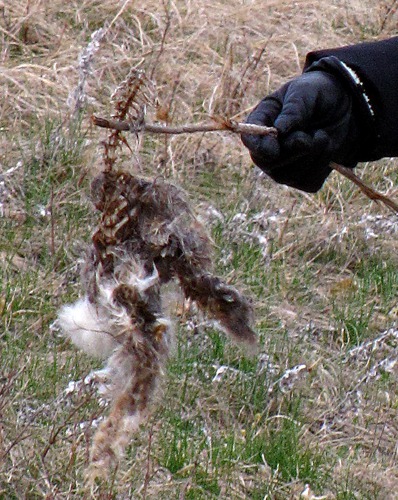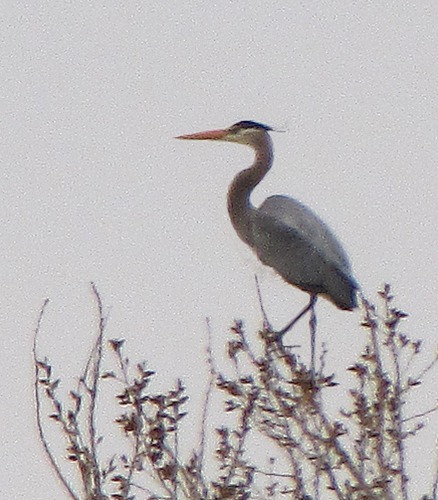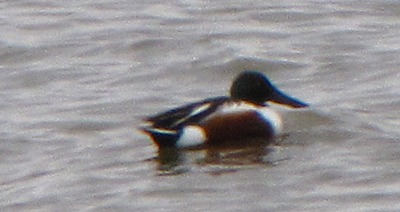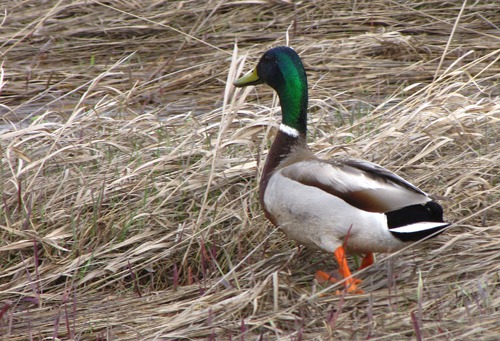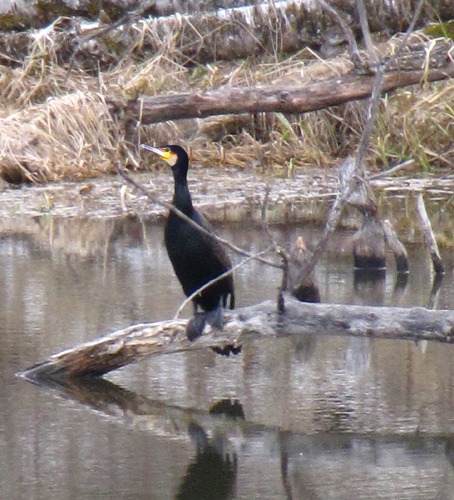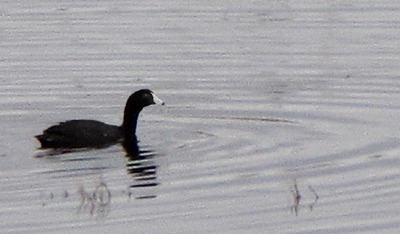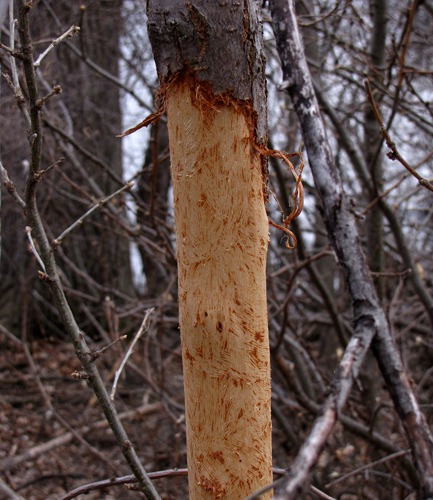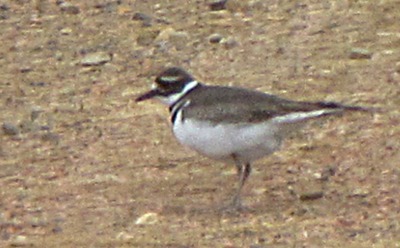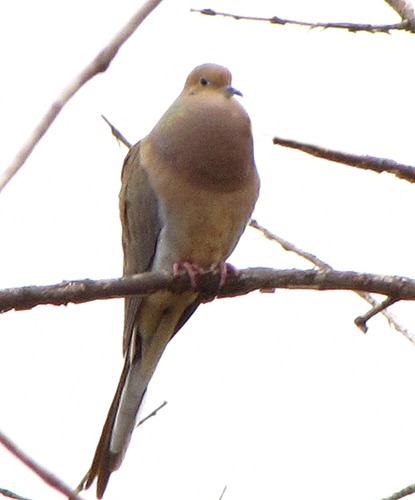We got a lot of good information from the brochures and the Refuge website. Here's a synopsis: The Refuge is 4,034 acres of prairie, grasslands, and wetlands – another perfect migration stop for ducks, sandhill cranes, and other birds. Many breed here. Average rainfall is 16.8 inches; this is a prairie environment with a climate of hot dry summers, occasional thunderstorms, and cold winters. Lake Ilo is 1,240 acres in size with a maximum depth of 15 feet. A 145 acre marsh, Lee Paul Slough, is attached to Lake Ilo by a canal. Here visitors can view marsh animals and plants.
Another two dozen smaller wetlands make up the remaining Refuge wetland habitat. Waterfowl, shorebirds, and other wildlife species find the wetlands attractive as summer breeding habitat and as a spring and fall migration stop.
Refuge uplands, 2,650 acres, are composed of native prairie, introduced grasses, cropland, and tree plantings. Refuge management uses prescribed fire, grazing, haying, and rest periods to preserve native plants and animals and create as much species diversity as possible. Native grasses and forbs are planted in former croplands to reestablish a grassland community. Approximately 50 acres of cropland remain in cultivation for wildlife food.
Large flocks of birds utilize Lake Ilo in the spring and fall. Peak concentrations can reach 100,000 waterfowl in the fall and 20,000 in the spring. The principle waterfowl nesting species are Canada geese, mallards, pintails, blue-winged teal, shovelers, and gadwall. Other nesting marsh and waterbirds include eared, western, and pied-bill grebes; double-crested cormorants; great blue herons; black-crowned night herons; and American bitterns.
Shorebirds, such as killdeer, plovers, sandpipers, willets, yellowlegs, marbled godwits, American avocets, and phalaropes are plentiful during migration.
Some songbirds, such as meadowlarks, sparrows, and swallows, are easily seen from roads, while others are best found by hiking and quietly observing. Ring-necked pheasant are common, while sharp-tailed grouse and gray partridge are not as plentiful. The Refuge is home to white-tailed deer, badger, skunk, beaver, raccoon, mink, and muskrat.
What they didn't mention is the porcupine -- we didn't see one, but saw where one had been.
It is a special treat to see the less common pronghorn antelope, mule deer, coyote, and secretive weasel on the Refuge.
The Refuge checklist includes 227 birds, 36 mammals, 6 reptiles, 3 amphibians, and 11 fish species.
In 1936 the Federal government built the dam as a Works Progress Administration (WPA) near the confluence of Spring and Murphy Creeks. Several hundred local citizens were hired during dam construction in 1936 and 1937. The new dam created the first major lake (Lake Ilo) in this part of the state.
In 1939, Franklin D. Roosevelt signed the Executive Order establishing Lake Ilo NWR as a breeding ground for migratory birds and other wildlife. As with most Refuges, purposes also include fish and wildlife oriented recreation, environmental education, interpretation, conservation of endangered species, and protection of cultural and natural resources. Over the years, wetlands, shelterbelts, and grassland habitats were developed to create an oasis for both migratory birds and resident wildlife.
By the late 1980's, the 50-year-old dam was showing its age. During a routine inspection dam engineers found it to be unsafe. Repair work began when the concrete spillway was notched and the lake lowered 7 feet in 1989.
Plains Indians Campsites: Then FWS personnel made a remarkable discovery -- large scatters of ancient stone tools, waste flakes, hearth stones, pottery shards, and a stone circle, or tipi ring, lay on the old lake bed's surface. Some of these artifacts represent campsites that have not been disturbed for over 10,000 years. These remarkable discoveries marked the beginning of a 7-year project to learn more about the last 11,000 years of Plains Indian life in western North Dakota.
Thirty-seven locations on the Refuge were studied in 1990. More than 58,000 stone artifacts were collected. The variety of spear, dart, and arrow points found along Murphy and Spring Creeks suggest that Native Americans visited this area for more than 10,000 years.
Folsom Paleoindians: Large scale excavations in 1992 and 1993 revealed sites from some of the earliest prehistoric visitors (Folsom period Paleoindians ca.10,500 years ago). Most of the stone artifacts from surface collections and excavations on the Refuge were produced from locally available Knife River flint. This dark, caramel-colored, glass-like stone was formed 50-60 million years ago. Knife River flint fractures like glass and can be made into very durable, sharp-edged tools. This critical resource is found in 60-100 dense concentrations in a small area of western North Dakota. Prehistoric stone tools made from Knife River flint have been found as far away as western New York State, western Montana, central Alberta, and northeastern New Mexico.
Work continued on the dam which was raised and sloped, a new spillway and emergency spillway were installed, and a new low-level outlet structure was added. Work was completed in 1996. The creation of two wetlands improved wildlife habitat, and two islands were built of earth from the old dam
Our visit here convinced us to make exploring the refuges a high priority, and we've visited many since!.
Louise with photos by Brian. Text and photos copyright Goin Mobyle LLC 2010


